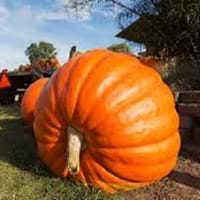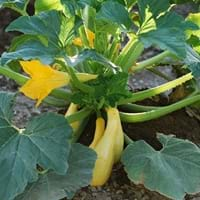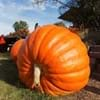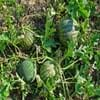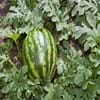Origin
South America
Hybrid origin, North America, Mexico, Central America
Types
Not Available
Not Available
Habitat
gardens, Moist Soils
Not Available
USDA Hardiness Zone
Not Available
Not Available
Sunset Zone
A1, A2, A3, H1, H2, 1a, 1b, 2a, 2b, 3a, 3b, 4, 5, 6, 7, 8, 9, 10, 11, 12, 13, 14, 15, 16, 17, 18, 19, 20, 21, 22, 23, 24
A1, A2, A3, H1, H2, 1a, 1b, 2a, 2b, 3a, 3b, 4, 5, 6, 7, 8, 9, 10, 11, 12, 13, 14, 15, 16, 17, 18, 19, 20, 21, 22, 23, 24
Habit
Vining/Climbing
Vining/Climbing
Flower Color
Yellow, Gold
Yellow, Orange
Flower Color Modifier
Bicolor
Bicolor
Fruit Color
Yellow, Orange
Yellow
Leaf Color in Spring
Green, Light Green
Green
Leaf Color in Summer
Green, Dark Green
Green, Dark Green
Leaf Color in Fall
Green, Dark Green
Green, Dark Green
Leaf Color in Winter
Not Available
Not Available
Leaf Shape
Heart-shaped
Heart-shaped
Plant Season
Summer, Fall
Summer, Fall
Sunlight
Full Sun
Full Sun
Growth Rate
Very Fast
Very Fast
Type of Soil
Loam
Loam, Sand
The pH of Soil
Neutral
Neutral
Soil Drainage
Well drained
Well drained
Bloom Time
Indeterminate
Indeterminate
Tolerances
Drought
Drought
Where to Plant?
Ground
Container, Ground
How to Plant?
Seedlings
Divison
Plant Maintenance
Medium
Medium
Watering Requirements
Keep the ground moist but not water-logged, Requires consistently moist soil, Requires regular watering, Requires watering in the growing season, Water in the early morning hours
Do not water frequently
In Summer
Lots of watering
Lots of watering
In Spring
Moderate
Moderate
In Winter
Average Water
Average Water
Soil Type
Loam
Loam, Sand
Soil Drainage Capacity
Well drained
Well drained
Sun Exposure
Full Sun
Full Sun
Pruning
Prune after flowering
Remove dead or diseased plant parts, Requires very little pruning
Fertilizers
Apply 5-10-5 amounts, Nitrogen, Phosphorous, Potassium
All-Purpose Liquid Fertilizer
Pests and Diseases
Red blotch
Borers, Cucumber beetles, Mealybugs, Powdery mildew
Plant Tolerance
Drought
Drought
Flower Petal Number
Single
Single
Foliage Texture
Coarse
Coarse
Foliage Sheen
Matte
Matte
Attracts
Beetles, Bugs
Not Available
Allergy
Asthma, breathing problems, Itchiness, Nasal Congestion, Swelling, Swelling in the face
Not Available
Aesthetic Uses
Not Used For Aesthetic Purpose
Not Used For Aesthetic Purpose
Beauty Benefits
Good for skin and hair, Not Available, Skin cleanser, Skin Problems
Not Available
Environmental Uses
Air purification
Air purification
Medicinal Uses
Anemia, Antibacterial, anti-cancer, cholesterol-lowering, Fertility, High blood pressure, Immunity, Liver problems, Prevention of convulsion, Regulates Blood Sugar
Not Available
Part of Plant Used
Fruits, Leaves, Seeds
Fruits
Other Uses
Used As Food, Used as Ornamental plant, Used for its medicinal properties, Used in salads
Used as a nutritious food item, Used As Food
Used As Indoor Plant
No
No
Used As Outdoor Plant
Yes
Yes
Garden Design
Edible, Herb / Vegetable
Edible, Herb / Vegetable, Vine
Botanical Name
CUCURBITA maxima 'Atlantic Giant'
CUCURBITA pepo 'Papaya Pear'
Common Name
Atlantic Giant Pumpkin, Pumpkin
Summer Squash
In Hindi
कद्दू
summer squash
In German
Kürbis
Sommerkürbis
In French
Citrouille
courges d'été
In Spanish
Calabaza
calabaza de verano
In Greek
Κολοκύθι
καλοκαίρι σκουός
In Portuguese
Abóbora
abobrinha
In Polish
Dynia
latem squash
In Latin
cucurbita
aestas cucurbitae
Phylum
Magnoliophyta
Magnoliophyta
Class
Magnoliopsida
Magnoliopsida
Family
Cucurbitaceae
Cucurbitaceae
Genus
Cucurbita
Cucurbita
Clade
Angiosperms, Eudicots, Rosids
Angiosperms, Eudicots, Rosids
Tribe
Cucurbiteae
Cucurbiteae
Subfamily
Cucurbitoideae
Cucurbitoideae
Number of Species
Not Available
Properties of Giant Pumpkin and Summer Squash
Wondering what are the properties of Giant Pumpkin and Summer Squash? We provide you with everything About Giant Pumpkin and Summer Squash. Giant Pumpkin doesn't have thorns and Summer Squash doesn't have thorns. Also Giant Pumpkin does not have fragrant flowers. Giant Pumpkin has allergic reactions like Asthma, breathing problems, Itchiness, Nasal Congestion, Swelling and Swelling in the face and Summer Squash has allergic reactions like Asthma, breathing problems, Itchiness, Nasal Congestion, Swelling and Swelling in the face. Compare all the properties and characteristics of these two plants. Find out which of these plant can be used as indoor plant. If you are interested to decorate your house and garden, find out aesthetic uses, compare them and select the plant which will beautify your surrounding. Along with beautification, try comparing medicinal and edible uses of Giant Pumpkin and Summer Squash and you can choose the plant having best and most benefits.
Season and Care of Giant Pumpkin and Summer Squash
Season and care of Giant Pumpkin and Summer Squash is important to know. While considering everything about Giant Pumpkin and Summer Squash Care, growing season is an essential factor. Giant Pumpkin season is Summer and Fall and Summer Squash season is Summer and Fall. The type of soil for Giant Pumpkin is Loam and for Summer Squash is Loam, Sand while the PH of soil for Giant Pumpkin is Neutral and for Summer Squash is Neutral.
Giant Pumpkin and Summer Squash Physical Information
Giant Pumpkin and Summer Squash physical information is very important for comparison. Giant Pumpkin height is 30.00 cm and width 500.00 cm whereas Summer Squash height is 60.00 cm and width 90.00 cm. The color specification of Giant Pumpkin and Summer Squash are as follows:
Giant Pumpkin flower color: Yellow and Gold
Giant Pumpkin leaf color: Green, Light Green
Summer Squash flower color: Yellow and Orange
- Summer Squash leaf color: Green
Care of Giant Pumpkin and Summer Squash
Care of Giant Pumpkin and Summer Squash include pruning, fertilizers, watering etc. Giant Pumpkin pruning is done Prune after flowering and Summer Squash pruning is done Remove dead or diseased plant parts and Requires very little pruning. In summer Giant Pumpkin needs Lots of watering and in winter, it needs Average Water. Whereas, in summer Summer Squash needs Lots of watering and in winter, it needs Average Water.
